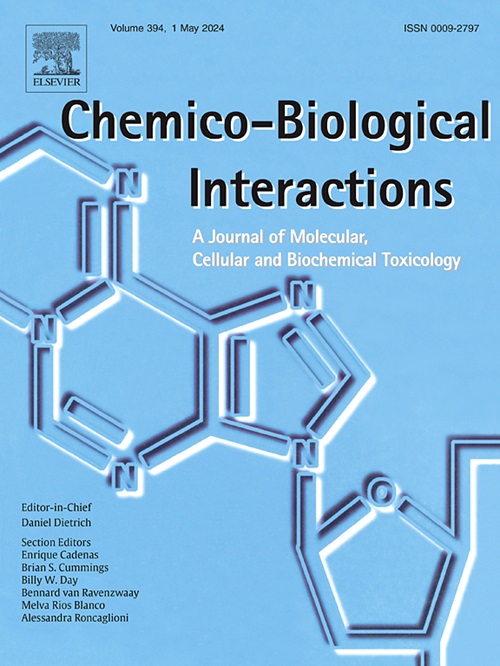Oxymatrine inhibits migration and invasion of esophageal squamous cell carcinoma cell lines via the MEK1/ERK/β-catenin pathway
IF 4.7
2区 医学
Q1 BIOCHEMISTRY & MOLECULAR BIOLOGY
引用次数: 0
Abstract
Esophageal, cancer is a prevalent malignant tumour of the digestive system in China, and esophageal squamous cell carcinoma (ESCC) accounts for 90 % of all esophageal cancer cases. Currently, the primary treatment involves surgical resection combined with postoperative radiotherapy. In this study, we used two ESCC cell lines to determine whether oxymatrine (OMT) inhibits ESCC, whether the mechanism involves the MEK1/ERK/β-catenin pathway, and how OMT modulates this pathway to affect the development of ESCC. The effects of OMT treatment were monitored with Cell Counting Kit-8 (CCK-8) assays as well as with clony formation, migration and invasion, wound healing, Hoechst 33258, and Western blot analyses. The relationship between OMT and the target was also evaluated by molecular docking and cell stability experiments. These findings suggest that ESCC development and metastasis may be inhibited by OMT and that OMT targets MEK1 through the ERK/β-catenin/EMT pathway to suppress ESCC cell migration and invasion. In addition, in vivo studies confirmed that OMT can inhibit the growth of ESCC cell lines in NOG mice without causing damage to other organs. In conclusion, in vitro experiments, revealed that OMT prevents the migration and invasiveness of ESCC cells by inhibiting the ERK/β-catenin/EMT pathway and thus targeting MAP2K1 (MEK1) in ESCC.
氧化苦参碱通过 MEK1/ERK/β-catenin 通路抑制食管鳞状细胞癌细胞株的迁移和侵袭
食管癌是中国常见的消化系统恶性肿瘤,食管鳞状细胞癌(ESCC)占食管癌病例总数的 90%。目前,主要的治疗方法是手术切除结合术后放疗。在这项研究中,我们利用两种 ESCC 细胞系来确定氧化苦参碱(OMT)是否能抑制 ESCC,其机制是否涉及 MEK1/ERK/β-catenin 通路,以及 OMT 如何调节该通路以影响 ESCC 的发展。研究人员通过细胞计数试剂盒-8(CCK-8)测定、克隆形成、迁移和侵袭、伤口愈合、Hoechst 33258和Western印迹分析来监测OMT治疗的效果。此外,还通过分子对接和细胞稳定性实验评估了 OMT 与靶标之间的关系。这些研究结果表明,OMT可抑制ESCC的发展和转移,OMT通过ERK/β-catenin/EMT通路靶向MEK1,从而抑制ESCC细胞的迁移和侵袭。此外,体内研究证实,OMT 可抑制 ESCC 细胞株在 NOG 小鼠体内的生长,且不会对其他器官造成损伤。总之,体外实验表明,OMT通过抑制ERK/β-catenin/EMT通路,从而靶向ESCC中的MAP2K1(MEK1),阻止了ESCC细胞的迁移和侵袭。
本文章由计算机程序翻译,如有差异,请以英文原文为准。
求助全文
约1分钟内获得全文
求助全文
来源期刊
CiteScore
7.70
自引率
3.90%
发文量
410
审稿时长
36 days
期刊介绍:
Chemico-Biological Interactions publishes research reports and review articles that examine the molecular, cellular, and/or biochemical basis of toxicologically relevant outcomes. Special emphasis is placed on toxicological mechanisms associated with interactions between chemicals and biological systems. Outcomes may include all traditional endpoints caused by synthetic or naturally occurring chemicals, both in vivo and in vitro. Endpoints of interest include, but are not limited to carcinogenesis, mutagenesis, respiratory toxicology, neurotoxicology, reproductive and developmental toxicology, and immunotoxicology.

 求助内容:
求助内容: 应助结果提醒方式:
应助结果提醒方式:


